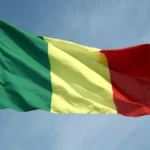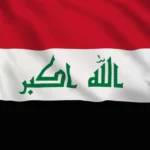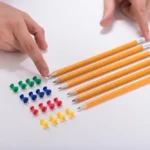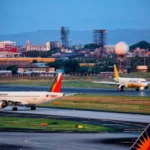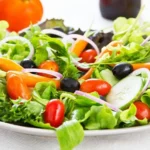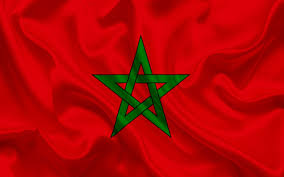
Morocco, a North African country bordering the Atlantic and the Mediterranean Sea, is characterized by its Berber, Arab and European cultural influences. It is a mountainous country of western North Africa that lies directly across the Strait of Gibraltar from Spain. Morocco is about one-tenth larger than the state of California in the US.
The name Morocco comes from the Spanish and Portuguese names “Marruecos” and “Marrocos,” which in turn, come from “Marrakesh” the Latin name for the former capital of ancient Morocco.
The earliest known independent Moroccan kingdom was the King Bocchus I, a Berber of Mauretania.
Archaeological homo sapien remains found in Morocco have been dated to around 315,000 years old.
Morocco laid claims to the territory of Western Sahara, leading to a war that continued until a cease-fire agreement was reached in 1991. The standoff continues today. The Moroccan government refers to this area as its Southern Provinces.
Morocco was a French protectorate from 1912 to 1956, when the country gained independence and Sultan Mohammed became king.
Today Morocco is a constitutional monarchy with an elected parliament. King Mohammad VI, who claims to be directly descended from the prophet, holds vast legislative as well as executive powers.
Morocco is currently the only kingdom in North Africa and one of only three in Africa. The other two are Lesotho and Swaziland.
Morocco celebrates their national holiday of Throne Day on July 30 each year, which celebrates and honors the accession of King Mohammad VI to the throne in 1999.
Morocco’s flag is red with a green, five-pointed star in the centre. Red and green are traditional colours in Arab flags and the five-pointed star – known as Sulayman’s (Solomon’s) seal – represents the five pillars of Islam.
The capital city of Morocco is Rabat. The largest city is Casablanca. Other major cities include Fes, Agadir, Oujda, Tangier, Marrakesh and Nador. Its main port city is Casablanca.
On a clear day, Morocco is visible from the Spanish mainland coast across the Strait of Gibraltar which is at its narrowest of 13km (8mi) between Point Marroquí (Spain) and Point Cires (Morocco).
Morocco is in the top five African economies by its GDP and a few years ago ranked as the first by the quality of life index of the Economist Intelligence Unit. Today it has the fifth largest economy in all of Africa.
Morocco is home to the world’s oldest university. The University of Karueein was founded in 859 AD in Fez and is the oldest existing, and continually operating educational institution in the world.
Morocco was once a member of the African Union but removed its membership in 1984 when the AU let one of the Western Sahara disputed territories enter as a member. However, Morocco once again joined the African Union in January 2017.
Morocco has nine UNESCO World Heritage Sites. In Africa, only South Africa (10) has more.
Morocco is a member of the Arab League, Arab Maghreb Union (UMA), the community of Sahel-Saharan States (CEN-SAD) and the Organization of Islamic Cooperation (OIC) plus the United Nations.
Morocco is the world’s largest exporter of sardines, accounting for over a quarter ($201 million) of the entire world’s exports.
France and Spain are Morocco’s primary trade partners, as well as their primary foreign investors and creditors.
Morocco is the most westerly of the North African countries and is known as the Maghreb or Maghrib in Arabic which means “the West”.
Cannabis is grown in the Rig Mountains and according to the French Ministry, 80 percent of the hashish consumed in Europe comes from here.
The medieval city of Fez in Morocco is home to the world’s largest car-free urban area.
The predominant religion in Morocco is Islam. Most people are Sunni Muslims. Any Moroccan who is sherfa (believed to be a descendant of the Prophet Muhammad) is given the title Lalla, Sidi, or Moulay.
Berbers are Morocco’s indigenous people and are descendants of North Africa’s pre-Arab inhabitants. In Morocco, they mostly live in the High Atlas Mountains, although some maintain a nomadic existence in the desert.
Morocco’s official languages are Berber and Arabic.
Morocco has been occupying Western Sahara since 1975.
The national literacy rate among adults in Morocco is 50 percent. French is required to be taught in all schools.
The small mountain town of Chefchaouen in Morocco is famous for its blue-washed buildings and is known as the Blue Pearl.
As many as 10 million people visit Morocco each year.
The UNESCO-listed ruined Roman city of Volubilis is the best-preserved archaeological site in Morocco.
The national drink is a green tea with mint leaves and other ingredients known as “atai” that is important in the culture of the Moroccan people. Refusing it is considered extremely rude.
Morocco’s national symbol is the lion and the country was once home to the largest lion subspecies, Barbary lions (Panthera leo leo).
The national Moroccan sport is football or soccer, known as Koura.
Morocco is partially covered by the world’s largest hot desert (excluding the Arctic and Antarctic deserts). The Sahara Desert, with a total area of 8,600,000sq km (3,320,000sq mi), covers much of North Africa.
Traditionally, the heart is not the symbol of love for the Moroccan people. The liver is.
Morocco’s High Atlas Mountains are North Africa’s highest mountain range. They are known by local Berbers as ‘Idraren Draren’ which means Mountains of Mountains.
A Moroccan woman, named Nawal EL Moutawakel, won the 400-meter hurdles and became the first woman from any Arab or Islamic country to win an Olympic Gold Medal.
Mount Toubkal, Morocco’s highest peak, is also North Africa’s highest peak at 4,167m (13,671ft).

